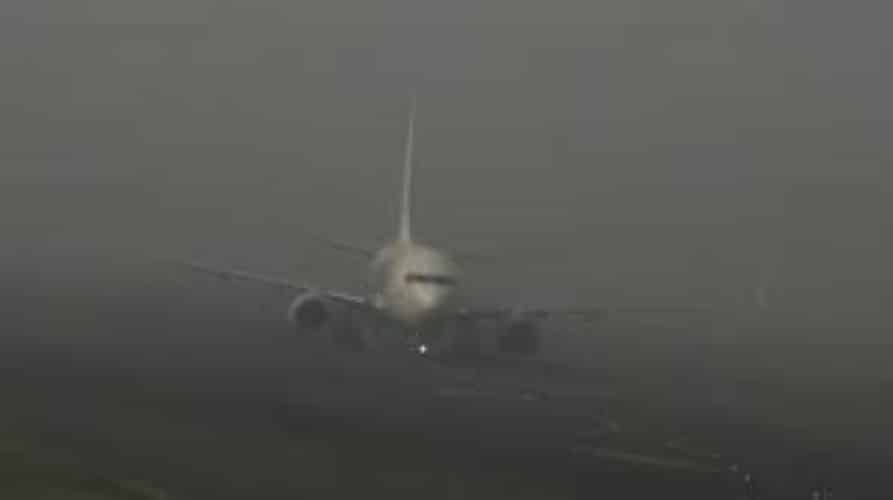Ensuring Smooth Air Travel During Fog Season

As the fog season approaches, the Ministry of Civil Aviation in India is taking proactive measures to ensure smooth air travel. Over the past two months, the Ministry has engaged in extensive consultations with various stakeholders, including airlines, airport operators, and security agencies. This collaborative effort aims to address the challenges posed by fog and enhance the overall travel experience for passengers. The focus is on seamless communication, efficient operations, and passenger convenience.
Collaborative Efforts for Enhanced Preparedness
The Ministry of Civil Aviation has emphasized the importance of collaboration among key stakeholders. This includes the Directorate General of Civil Aviation (DGCA), Bureau of Civil Aviation Security (BCAS), Airports Authority of India (AAI), Indian Meteorological Department (IMD), and Central Industrial Security Force (CISF). By working together, these organizations aim to tackle the challenges that fog presents to air travel.
One of the primary goals is to ensure transparent communication with passengers. Airlines are now required to proactively inform travelers about potential delays or cancellations due to visibility issues. This initiative involves ensuring that accurate passenger contact information is collected during ticket booking. By keeping passengers informed, the Ministry hopes to reduce uncertainty and enhance the overall travel experience.
Additionally, airlines have been reminded to cancel flights if delays exceed three hours. This measure aims to prevent passengers from waiting indefinitely and to facilitate better planning for travelers. The DGCA has also engaged Online Ticketing Agents (OTAs) to improve communication with passengers, ensuring a smoother experience for those booking flights through these platforms.
Streamlined Operations for Low Visibility Conditions
To further enhance operational efficiency during foggy conditions, the Ministry has implemented several key initiatives. Airlines have been advised to sensitize their Operations Control Centers (OCCs) for better coordination during adverse weather. This initiative focuses on real-time decision-making, allowing airline staff to understand the on-ground realities of airport operations. By improving communication and coordination, airlines can respond more effectively to flight delays or cancellations.
The Airports Authority of India (AAI) has introduced new Standard Operating Procedures (SOPs) for Wide Area Traffic Management. These procedures are designed to regulate air traffic at fog-affected airports, ensuring that flights can operate safely and efficiently. Close coordination among Air Traffic Control (ATC), Airline Operations Control Centers (AOCC), and other stakeholders is crucial for managing air traffic during low visibility conditions.
Furthermore, the IMD is committed to ensuring that all meteorological equipment functions without disruption. In collaboration with the AAI, the IMD is expediting the implementation of the Advanced Weather Observation System (AWOS) at key airports. This system will provide accurate and timely weather information to pilots and air traffic controllers, enhancing operational safety and efficiency.
Enhancing Passenger Experience and Safety
The Ministry’s initiatives also focus on improving the passenger experience during the fog season. A BCAS circular has been operationalized to facilitate the smooth re-entry of passengers in case of flight cancellations. Drills organized by the CISF aim to ensure that passengers are not held up inside delayed aircraft for more than 90 minutes. This measure significantly reduces passenger inconvenience and ensures a smoother re-boarding process once flights resume.
In addition, the DGCA has ensured the deployment of adequately trained crew and aircraft for Low Visibility Operations at affected airports. Three runways at Delhi Airport have activated CAT III Instrument Landing Systems (ILS), which are essential for safe landings in low visibility conditions. The airport has also installed LED screens to provide real-time updates on visibility conditions, keeping passengers informed.
To further enhance ground operations, Delhi Airport has increased the number of “Follow-Me” vehicles. These vehicles guide pilots on the apron and taxiway during low visibility, ensuring better coordination on the ground. Airlines are also committed to maintaining full staffing at check-in counters during peak hours to minimize passenger inconvenience.
A Focus on Safety and Convenience
Through these comprehensive initiatives, the Ministry of Civil Aviation is ensuring that all stakeholders are well-coordinated to tackle the challenges of the fog season. The primary focus remains on safeguarding passenger convenience and safety while providing a seamless flying experience. By fostering collaboration and implementing effective strategies, the Ministry aims to enhance the overall travel experience for passengers during this challenging time.
Observer Voice is the one stop site for National, International news, Sports, Editor’s Choice, Art/culture contents, Quotes and much more. We also cover historical contents. Historical contents includes World History, Indian History, and what happened today. The website also covers Entertainment across the India and World.
Follow Us on Twitter, Instagram, Facebook, & LinkedIn

